 FlowScraper
VS
FlowScraper
VS
 UseScraper
UseScraper
FlowScraper
FlowScraper revolutionizes web data extraction through its innovative visual flow builder and AI-powered automation capabilities. The platform eliminates common web scraping challenges like complex setups, coding requirements, and anti-bot restrictions.
With built-in protections, customizable AI actions, and an intuitive interface, users can efficiently create and manage data collection workflows while saving significant time and resources. The platform offers scalable solutions suitable for both small projects and large-scale data extraction needs.
UseScraper
UseScraper is a powerful web scraping and crawling tool designed for speed and efficiency. It allows users to quickly extract data from any website URL and obtain the page content within seconds. For comprehensive data extraction, UseScraper's Crawler can fetch sitemaps or crawl thousands of pages per minute, leveraging its auto-scaling infrastructure.
The tool utilizes a real Chrome browser with JavaScript rendering capabilities. This guarantees that even the most dynamic websites can be scraped and processed accurately. UseScraper is capable of outputting data in several convenient forms, such as clean markdown, plain text or raw HTML.
Pricing
FlowScraper Pricing
FlowScraper offers Freemium pricing with plans starting from $10 per month .
UseScraper Pricing
UseScraper offers Usage Based pricing .
Features
FlowScraper
- Visual Flow Builder: Drag-and-drop interface for creating scraping workflows
- Anti-Bot Protection: Built-in security measures to prevent blocking
- Token-based System: Flexible usage-based pricing structure
- Cron Scheduling: Automated recurring scraping tasks
- AI Actions: Customizable artificial intelligence operations
- No-Code Platform: User-friendly interface for non-developers
- Encrypted Credentials: Secure storage of access information
UseScraper
- Scraper API: Scrape any webpage quickly and efficiently.
- Crawler API: Crawl entire websites at high speed.
- JavaScript Rendering: Uses a real Chrome browser to process dynamic content.
- Multiple Output Formats: Extract data in plain text, HTML, or markdown.
- Multi-site Crawling: Include multiple websites in one crawl job request.
- Exclude Pages: Exclude specific URLs from a crawl with glob patterns.
- Exclude Site Elements: Write CSS selectors to exclude repetitive content from pages.
- Webhook Updates: Get notified on crawl job status and completion.
- Output Data Store: Access crawler results via API.
- Auto Expire Data: Set an auto expiry on data that you've saved to your own data store.
Use Cases
FlowScraper Use Cases
- Data collection for market research
- Automated website monitoring
- Price comparison data gathering
- Content aggregation
- Lead generation
- Competitive analysis
- Product information tracking
UseScraper Use Cases
- Extracting data from websites for market research.
- Gathering content for AI model training.
- Monitoring website changes for competitive analysis.
- Collecting product information from e-commerce sites.
- Archiving web content for compliance or record-keeping.
Uptime Monitor
Uptime Monitor
Average Uptime
0%
Average Response Time
0 ms
Last 30 Days
Uptime Monitor
Average Uptime
100%
Average Response Time
152.67 ms
Last 30 Days
FlowScraper
UseScraper
More Comparisons:
-
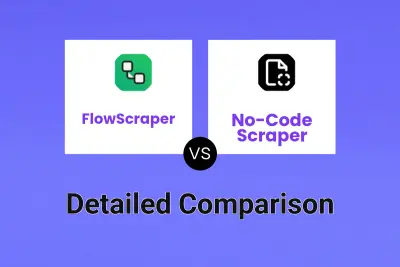
FlowScraper vs No-Code Scraper Detailed comparison features, price
ComparisonView details → -
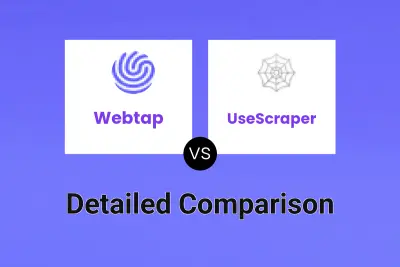
Webtap vs UseScraper Detailed comparison features, price
ComparisonView details → -
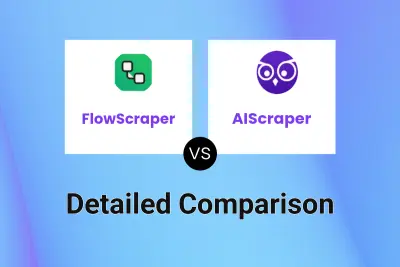
FlowScraper vs AIScraper Detailed comparison features, price
ComparisonView details → -

FlowScraper vs ScrapeStorm Detailed comparison features, price
ComparisonView details → -
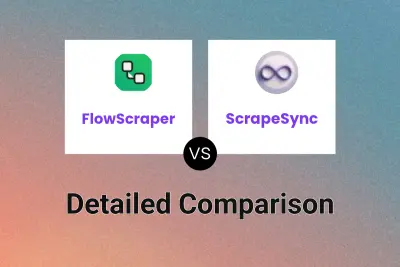
FlowScraper vs ScrapeSync Detailed comparison features, price
ComparisonView details → -

FlowScraper vs ApiScrapy Detailed comparison features, price
ComparisonView details → -
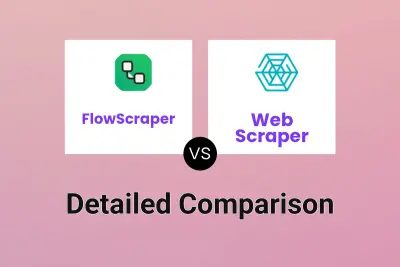
FlowScraper vs Web Scraper Detailed comparison features, price
ComparisonView details → -

FlowScraper vs BrowserAct Detailed comparison features, price
ComparisonView details →
Didn't find tool you were looking for?